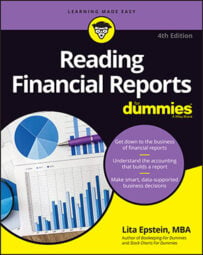At the top of every income statement on financial reports is the revenue the company brings in. This revenue is offset by any costs directly related to it. The top section of the income statement includes sales, cost of goods sold, and gross margin. Below this section, and before the profit and loss section, are the expenses.
Revenue
A company records all sales of products or services in revenue accounts. The following accounts record revenue transactions:
Sales of goods or services: This account tracks the company's revenues for the sale of its products or services.
Sales discounts: This account tracks any discounts the company offers to increase its sales. If a company is heavily discounting its products, either it may be competing intensely or interest in the product may be falling. A company outsider probably doesn't see these numbers, but if you're reading the reports prepared for internal management, this account gives you a view of how discounting is used.
Sales returns and allowances: This account tracks problem sales from unhappy customers. A large number here may reflect customer dissatisfaction, which could be the result of a quality-control problem. A company outsider probably doesn't see these numbers, but internal management financial reports show this information. A dramatic increase in this number is usually a red flag for company management.
Cost of goods sold
A company tracks the costs directly related to the sale of goods or services in cost of goods sold accounts. The details usually appear only on internally distributed income statements and aren't distributed to company outsiders. Cost of goods sold is usually shown as a single line item, but it includes the transactions from all these accounts:
Purchases: This account tracks the cost of merchandise a company buys. A manufacturing company has an extensive tracking system for its cost of goods that includes accounts for items like raw materials, components, and labor to produce the final product.
Purchase discounts: This account tracks any cost savings a company is able to negotiate because of accelerated payment plans or volume buying. For example, if a vendor offers a 2 percent discount when a customer pays an invoice within 10 days rather than the normal 30 days, the vendor tracks this cost saving in purchase discounts.
Purchase returns and allowances: This account tracks any transactions involving the return of any damaged or defective products to the manufacturer or vendor.
Freight charges: This account tracks the costs of shipping the goods sold.

